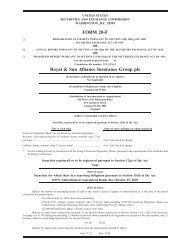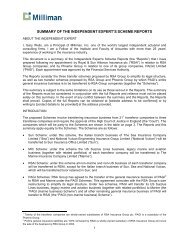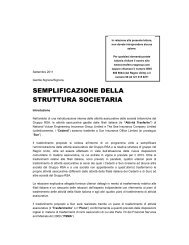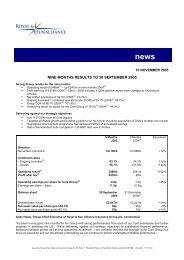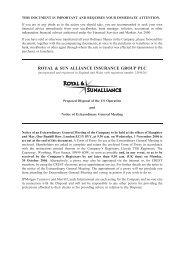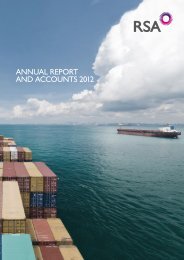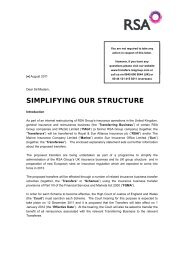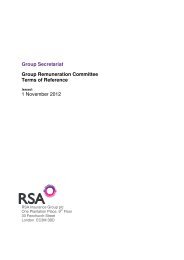RSA RETAIL RESEARCH PAPER2 WEB HR.pdf
RSA RETAIL RESEARCH PAPER2 WEB HR.pdf
RSA RETAIL RESEARCH PAPER2 WEB HR.pdf
Create successful ePaper yourself
Turn your PDF publications into a flip-book with our unique Google optimized e-Paper software.
THE WORLD IS GETTING SMALLER –<br />
WHO IS OUR CONSUMER?<br />
AN INTERESTING QUESTION...<br />
The world’s population has reached more than 7 billion, meaning<br />
we are increasingly getting closer in distance, and as consumers,<br />
technology and travel are making change move even faster.<br />
Ref. Google – World Population<br />
The number of households is growing, in some countries more<br />
rapidly than others, mainly due to emigration and changes in the<br />
typical size of family units (outlined later).<br />
NUMBER OF HOUSEHOLDS IN WESTERN EUROPE IN 000S.<br />
UK<br />
Turkey<br />
Switzerland<br />
Sweden<br />
Spain<br />
Portugal<br />
Norway<br />
Netherlands<br />
Italy<br />
Ireland<br />
Greece<br />
Germany<br />
France<br />
Finland<br />
Denmark<br />
Belgium<br />
Austria<br />
0 10000 20000 30000 40000 50000 60000 70000<br />
1990<br />
2010<br />
Ref. European marketing statistics Euromonitor.<br />
Typical habits and consuming trends are becoming more global<br />
as we see Retailers growing their presence in multiple countries<br />
and the media opens up the world to sharing. We know, however<br />
that there are still some substantial differences in the way that<br />
consumers behave between continents and countries, and even<br />
regions within countries. History and culture play a role in driving<br />
some of these differences through religion, beliefs and language.<br />
For the consumer, a trip to another country usually still offers<br />
a different experience or set of products, even though the<br />
differences are much less pronounced than they were 10 years ago<br />
or more.<br />
Local stores have maintained more of this difference than those in<br />
the high streets or main streets across Europe, where international<br />
brands have become the norm.<br />
Consumers across Europe often buy online, particularly in the UK,<br />
Germany and France in Western Europe, and growing in Eastern<br />
Europe, specifi cally Russia, Poland and the Czech Republic. These<br />
purchases are often from international Retailers.<br />
2010 INTERNET SALES $US BILLION<br />
UK<br />
Turkey<br />
Switzerland<br />
Sweden<br />
Spain<br />
Portugal<br />
Norway<br />
Netherlands<br />
Luxembourg<br />
Italy<br />
Ireland<br />
Greece<br />
Germany<br />
France<br />
Finland<br />
Denmark<br />
Belgium<br />
Austria<br />
TO SUMMARISE…<br />
0 10 20 30 40<br />
$US BILLION<br />
Ref. European marketing statistics Euromonitor.<br />
• Global consumers are becoming more alike with a big increase<br />
in buying via the Internet.<br />
• Niche and local businesses are retaining some cultural and<br />
personalised strengths that consumers welcome.



